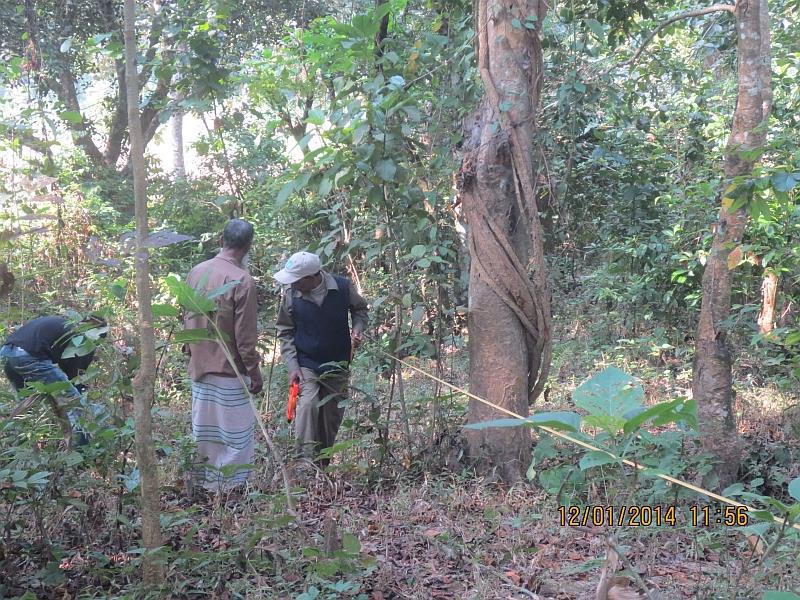Jiban Chandra Deb
Where and what type of rare and endangered tree species need to be conserved to meet specific conservation goals and to grow successfully under likely climate change impacts in the Rema-Kalenga Wildlife Sanctuary (RKWS) of Bangladesh.

GPS location reading.
Tropical forests are considered as the most diverse habitats of the earth and perhaps, the least understood of earth’s ecosystem. But, they are now under unprecedented threat due to the deforestation and degradation and also the more insidious threats of accelerating atmospheric and climate change. In the last two decades ‘climate change’ has been accepted globally and it is evident that a wide variety of species are responding to the changing climate by altering their phenology and geographical distributions.
The total forest cover of Bangladesh is decreasing at an alarming rate and the biodiversity of the forest is under serious threat due to changing climate. The existing natural forests of Bangladesh are decreasing at a rate varying from 2.1% to 3.3% per year and the statistics of FAO indicate that the actual tree cover is estimated at around 10%. In order to assess the distributions of trees in the protected areas under future climate scenario, mapping tree species distribution is essential.
Although many studies have attempted to model the distribution of different tree species in the tropics, almost no work has been done on predictive distribution maps of tree species in the protected areas of Bangladesh. The tree diversity of Rema-Kalenga Wildlife Sanctuary in Bangladesh is very high. There are different types of rare and endangered tree species have been identified in this forest. Understanding the current and future distributions of tree species is essential for the sustainable management of forest and also for the conservation planning of this protected area. Thus, mapping the current and future distributions of the rare and endangered tree species of protected area is utmost important to the conservation planner.
In Bangladesh, there is no database on the geographic distribution of the plant species and also many species are yet to be identified. Being a climate vulnerable country, it is essential to keep records of all kinds of species of the protected areas in Bangladesh. This project will help to prepare baseline information on the distribution of the rare and endangered tree species in the study area. The results of the project will be published in international peer reviewed journals and talks for national and international conferences are also planned based on the outcome of this project. The project findings will be distributed to the national and international interested parties and conservation groups in order to take proper steps for conservation planning.